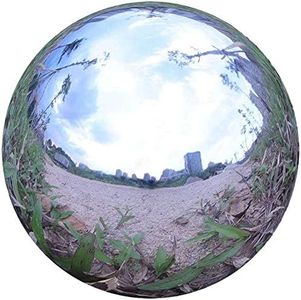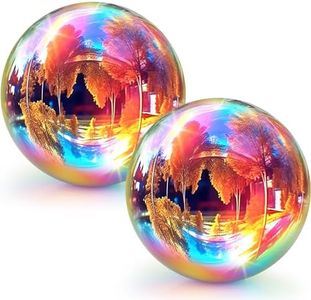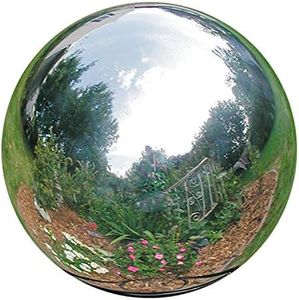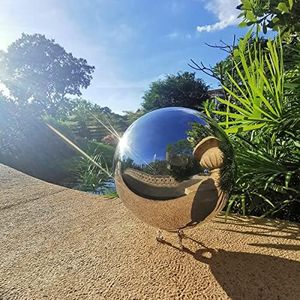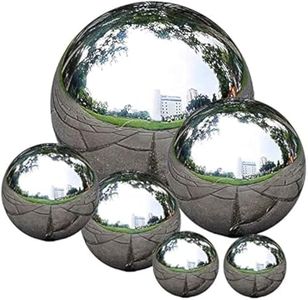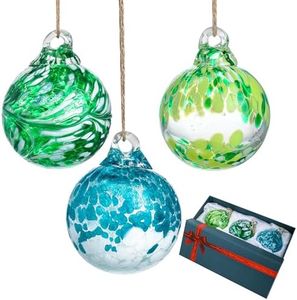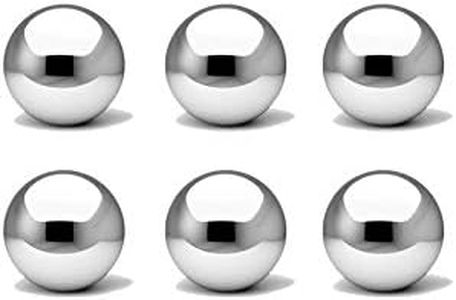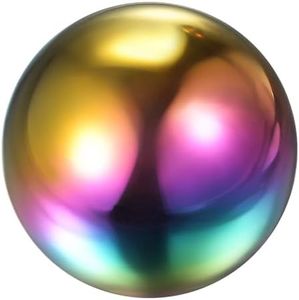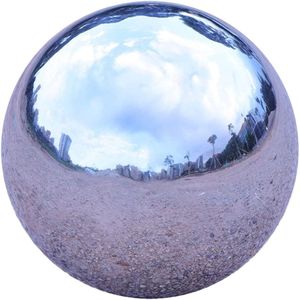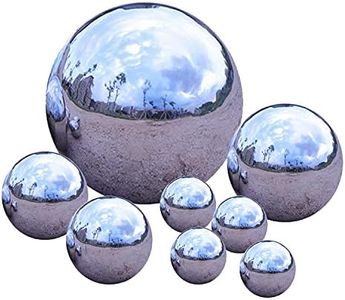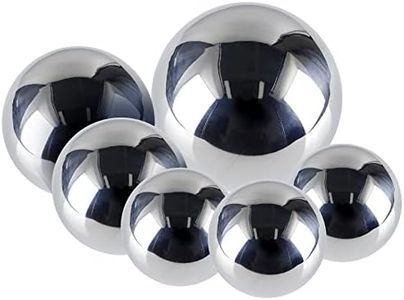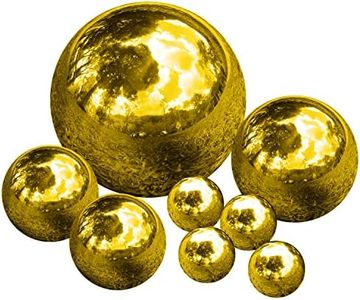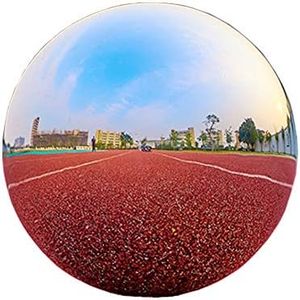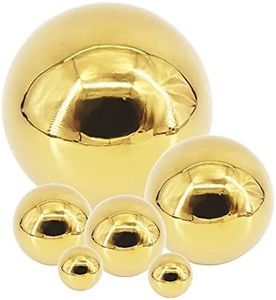We Use CookiesWe use cookies to enhance the security, performance,
functionality and for analytical and promotional activities. By continuing to browse this site you
are agreeing to our privacy policy
10 Best Gazing Balls
From leading brands and best sellers available on the web.Buying Guide for the Best Gazing Balls
Gazing balls, sometimes known as garden globes, add an enchanting touch to gardens, patios, or indoor spaces. Choosing the right gazing ball for your needs means considering not just how it looks, but also how durable, safe, and suitable it is for your environment. The right selection can enhance your outdoor aesthetics and withstand weather over time, so it's important to look at a few key specifications before making your decision.MaterialThe material of a gazing ball is crucial because it determines both appearance and durability. Common materials include glass, stainless steel, acrylic, and ceramic. Glass gazing balls often provide vibrant colors and a magical shine but can be more fragile. Stainless steel is highly durable, weather-resistant, and usually has a mirror-like finish, making it a safer long-term outdoor option. Acrylic gazing balls are lightweight and shatter-resistant, ideal for homes with children or pets, though they may not look as elegant as glass or steel. Choose the material based on where the ball will be placed (indoors, sheltered garden, or exposed outdoors) and the level of maintenance or fragility you're comfortable with.
SizeSize affects both the visual impact and the placement options of your gazing ball. They can range from small (about 4 inches in diameter) to very large (up to 12 inches or more). Smaller sizes typically work well in container gardens, small spaces, or as subtle accents, while larger balls stand out as focal points in bigger garden areas. Think about the scale of your space and the statement you want to make – a bigger ball will attract more attention but needs more space and a sturdier stand.
Color and FinishThe color and finish of a gazing ball set the mood and appearance of your garden or home. Some are reflective and mirror-like, while others are iridescent, frosted, or brightly colored. Reflective balls create striking visuals by mirroring their surroundings, while colored or patterned balls add a splash of hue or whimsical touch. Pick a finish that complements your plants, garden décor, or indoor style, and consider how sunlight will interact with it throughout the day.
Weather ResistanceWeather resistance ensures your gazing ball remains attractive and intact despite being outside. This includes resistance to rain, sun (UV), frost, and wind. Stainless steel and some thick glass balls are particularly good for harsh conditions, while delicate materials or less robust finishes may fade, crack, or break. If you live in an area with rough weather or plan to leave the ball outside year-round, look for options marketed as weatherproof or rated for outdoor use.
Safety (Shatter-resistance)Safety refers to how well the ball withstands impact without breaking into sharp pieces. This matters if you have children, pets, or if the ball will be in a high-traffic area. Acrylic and stainless steel are generally shatter-resistant, making them safer choices than glass, which can break easily. Your household makeup and the ball’s placement (for example, near walkways or play areas) should guide how important shatter-resistance is to your choice.
Mounting OptionsMounting options describe how the gazing ball is meant to be displayed – whether directly on the ground, in a bowl, on a pedestal, or suspended. Some balls come with dedicated stands; others need extra accessories. The right display option depends on your garden design and space constraints. If you want your gazing ball to serve as a centerpiece, a pedestal might suit, while hidden supports allow the ball to seem mysteriously balanced among plants. Think about not only looks but also stability and ease of installation when choosing.
